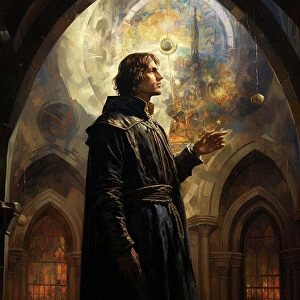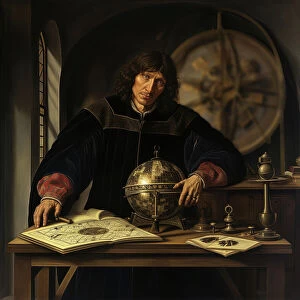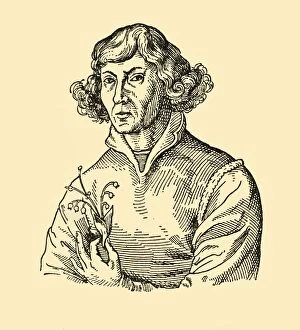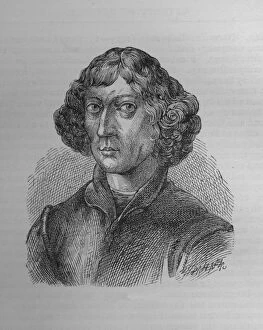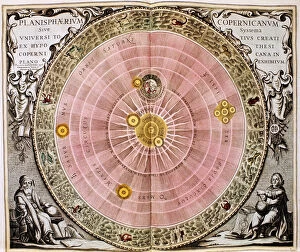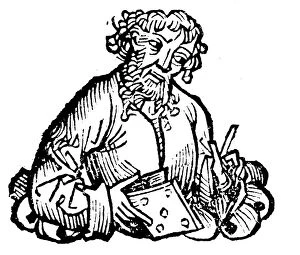Heliocentric Universe Collection
The concept of a heliocentric universe, also known as the Copernican system or Sun-centered system of the Universe, dates back to 1708
For sale as Licensed Images
Choose your image, Select your licence and Download the media
The concept of a heliocentric universe, also known as the Copernican system or Sun-centered system of the Universe, dates back to 1708. It was Nicolaus Copernicus, a Polish mathematician and astronomer in the late 18th and early 19th centuries, who first proposed this revolutionary idea. The image created by J Chapman in 1708 depicts this groundbreaking theory. Another representation of the heliocentric model can be seen in an unknown artist's depiction from 1933 featuring Nikolaus Kopernikus himself. Galileo Galilei, an Italian scientist from the late 18th or early 19th century, is also portrayed in a painting by Pietro Antonio Leone Bettelini dating back to 1894. The influence of Andreas Osiander, a German Lutheran theologian from the 16th century onwards until the following century cannot be overlooked when discussing this topic. His contributions helped shape our understanding of the Copernican (heliocentric) system of the universe during that time period. Johannes Hevelius' artwork from the 17th century further illustrates this revolutionary concept with his portrayal of the Copernican sun-centered (heliocentric) system of the universe in great detail. Even earlier than these depictions is Aristarchos of Samos' work around fl260 BC as an Alexandrian astronomer. His ideas laid some groundwork for what would later become Copernicus' heliocentric model presented in his book "De revolutionibus orbium coelestium" published in1543. This groundbreaking publication marked a turning point and solidified Copernicus' place as one of history's most influential figures within astronomy and mathematics. The title page alone speaks volumes about its significance.

